The Sumitomo Rubber Group emphasizes conducting sustainable business activities in harmony with society and the environment. To drive the realization of its corporate strategies, the group established a new corporate philosophy system, “Our Philosophy,” in December 2020, defining its Purpose as “Through innovation we will create
a future of joy and well-being for all.”
This Purpose serves as the foundation for all decision-making and actions, guiding the group to strive for not only economic value but also the enhancement of social value, ultimately contributing to the development of a sustainable society.
To realize “Our Philosophy,” the group identifies material issues by considering risks and opportunities throughout the value chain. Among these identified material issues, “Climate Change,” “Biodiversity,” and the “Circular Economy” are deeply interconnected. The group believes in addressing these issues through an integrated approach rather than in isolation and actively works on initiatives accordingly.
The group recognizes that greenhouse gas emissions from its business activities could significantly impact the entire business if climate change worsens. Climate change, centered on global warming, is a shared challenge for humanity. Therefore, the group commits to addressing it to pass on a better global environment to future generations.
Reducing CO2 emissions—the primary cause of global warming—is essential for the group's sustainable growth and achieving a sustainable environment and society. The group considers this effort an indispensable and critical social responsibility.
At the core of our group’s efforts lies the Sustainability Management Promotion Headquarters, working in unison with top management and various departments to advance integrated environmental management initiatives. To further sustainability management, the “Sustainability Promotion Committee,” chaired by the Executive Director in Charge of Sustainability and joined by officers in charge of respective divisions, meets twice annually. This committee ensures thorough company-wide policy implementation and monitors progress on material issues.
Under the committee, the Sustainability Promotion Working Group (WG) has been established. Among its initiatives, the Carbon Neutral Subcommittee operates as a cross-functional team to drive progress in this crucial area.
In June 2021, our Group declared its support for the TCFD recommendations. Concerning both risks and opportunities that climate change poses to our business, we have moved forward with information disclosure based on the following four basic elements: governance, strategy, risk management, targets and indicators.
Climate change risks have been identified as one of our material issues, necessitating detailed analysis. Following the TCFD declaration, we have assessed the business impacts through analysis of 4℃ and 1.5/2℃ scenarios. In 2024, we revisited and reorganized our strategies for dealing with these risks and opportunities.

Our Group is committed to achieving carbon neutrality (Scope 1 and 2) by 2050 to contribute to climate change mitigation. In addition, we are committed to pushing ahead with various Group-wide efforts to mitigate the effects of climate change, including reducing the life cycle environmental impact of our products through environmentally friendly procurement, logistics, and manufacturing.
For details on risk management within our Group, please refer to the following link.
The Group has set a goal of achieving carbon neutrality (Scope 1 and 2) by 2050 and formulated a scenario for reducing CO2 emissions based on the actual energy consumption at each site. The initial target of a 50% reduction by 2030 (compared to 2017 base year), set in our Long-Term Sustainability Policy, “Driving Our Future Initiatives 2050,” has been raised to a 55% reduction due to the proactive efforts at each of our sites. Additionally, approximately 97% of our Group’s CO2 emissions fall under Scope 3. To achieve carbon neutrality across the entire supply chain, we have set a 2030 target to cover approximately 80% of Scope 3 emissions. For Category 1 (Material Development and Procurement), we aim to reduce emissions by 25% by 2030 (compared to 2021 base year) by strengthening supplier engagement. For Category 4 (Logistics), we aim to reduce emissions by 10% by 2030 (compared to 2021 base year) through efforts such as promoting modal shift. In addition, for Category 11 (Sales and Usage) and Category 12 (Recovery and Recycling), we will make efforts to reduce the rolling resistance of tires, extend the lives of tires, and expand the production capacity of retread tires. We will aim to achieve these targets by promoting initiatives outlined in “Driving Our Future Initiatives 2050” and the circular economy concept for the tire industry:“TOWANOWA.”
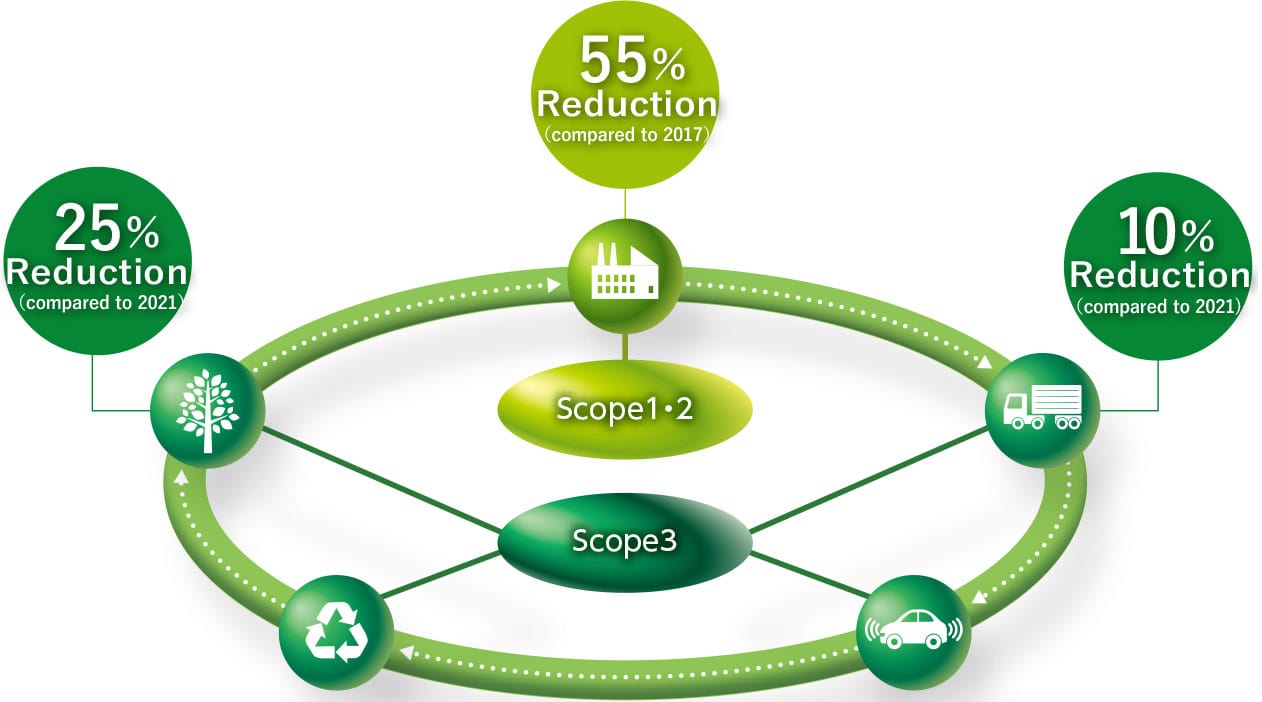
| 2030 Target | 2024 Emissions (t-CO2) | 2017 base year | Main Reduction Measures | |
|---|---|---|---|---|
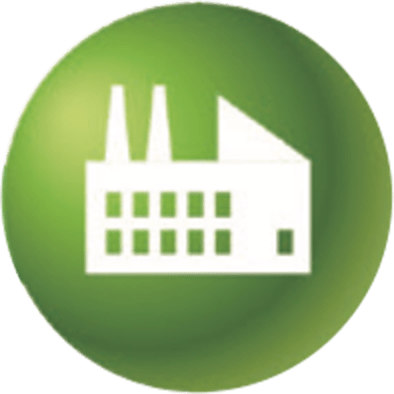 Scope 1 and 2
|
55%reduction (base year 2017) |
681,269 | 35%reduction | Installation of energy-saving facilities, expansion of cogeneration systems, introduction of solar power generators, and shift to green energy procured from renewable energy sources |
* In 2017, CO2 emissions were calculated using location-based emission factors, while in 2024, the reduction ratio was derived from CO2 emissions calculated using market-based emission factors.
| 2030 Target | 2024 Emissions(t-CO2) | 2021 base year | Main Reduction Measures | |
|---|---|---|---|---|
 Category 1
「Purchased goods/services」 |
25%reduction (base year 2021) |
4,454,962 | 23%reduction | Use of sustainable raw materials and strengthening engagement with suppliers |
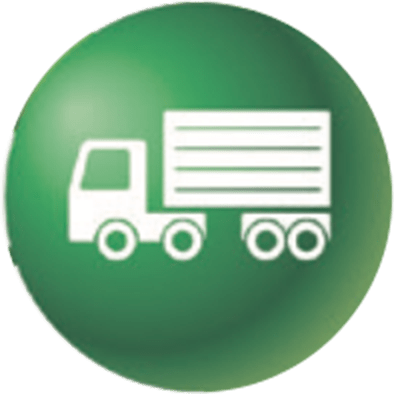 Category 4
「Upstream transportation and distribution」 |
10%reduction (base year 2021) |
364,144 | 3%reduction | Promotion of modal shift and optimization of logistics systems |
 Category 11
「Use of sold products」 |
Setting KPIs | - | 15%reduction | Reduction of tiresʼ rolling resistance, longer tire life, and lighter tire weight |
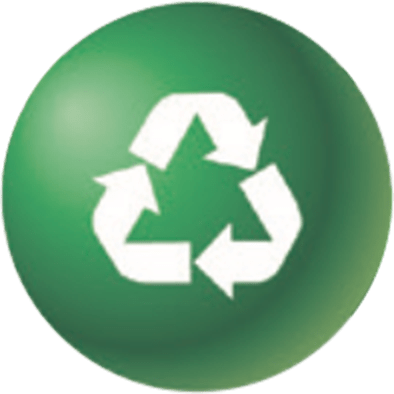 Category 12
「End-of-life treatment of sold products」 |
Setting KPIs | - | 16%reduction | Increased production capacity of retreading tires, lighter tire weight and use of sustainable raw materials |
* CO2 emissions are calculated using emission factors from IDEA ver. 2.3.
|
Item
|
Details
|
Reference Information
|
|---|---|---|
|
Acquisition of SBT Certification
 |
The Sumitomo Rubber Group received certification for its GHG emissions reduction targets for 2030 from the Science Based Targets Initiative (SBTi) based on the recognition that our reduction targets are consistent with scientific evidence. |
Sumitomo Rubber’s Greenhouse Gas Emission Reduction Targets Acquire SBT Certification |
|
RE100
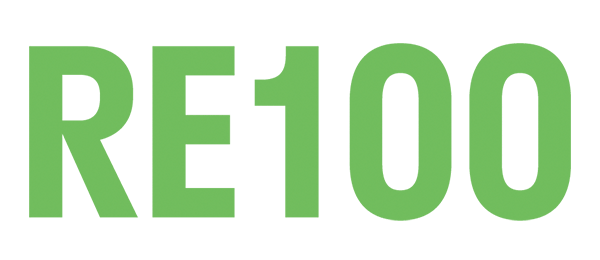 |
The Company announced that it has officially endorsed “RE100,” an international environmental initiative that brings together companies all over the world with the shared aim of transitioning to 100% renewable energy for all of their electric power needs. |
Sumitomo Rubber Joins the RE100 International Environmental Initiative |
|
Participation in the Japan Rubber Manufacturers Association
|
To implement our approach and strategies for climate change actions in alignment with industry trends, we participate in the Japan Rubber Manufacturers Association. In addition, we are actively engaged in the Keidanren (Japan Business Federation) Carbon Neutrality Action Plan. |
Environmental Initiatives | JRMA The Japan Rubber Manufacturers Association |
In 2024, in addition to our existing investment criteria, we identified mitigation and adaptation priorities to address climate change risks (including transition risks) and established internal sustainability-related investment criteria, taking into account the actions of other companies and market conditions. In 2025, we will incorporate sustainability-related investments into our business and financial plans based on these criteria. Additionally, we have allocated a budget for an environmental performance data management system, including CO2 data, and are actively involved in data analysis and management. As we advance, we will continue to enhance our data analysis and management capabilities to strengthen our efforts to reduce CO2 emissions.
|
Item
|
Our Approach
|
|---|---|
|
Scope 1 and 2
|
We are advancing initiatives such as installation of energy-saving facilities, expansion of cogeneration systems, introduction of solar power generators, and shift to green energy procured from renewable energy sources. Through these measures, we are promoting the reduction of CO2 emissions across the entire Group. In particular, we recognize that achieving carbon neutrality in the fuels used to generate steam is a critical challenge in reducing Scope 1 emissions. To this end, we are collaborating with industry, academia, and government to establish and develop technologies for utilizing new energy sources, such as hydrogen. We aim to implement decarbonization initiatives, including fuel conversion, while closely monitoring developments in infrastructure and technological innovation from 2030 onwards. |
From August 2021 to March 2024, at our main tire factory, the Shirakawa Factory in Fukushima Prefecture, we conducted a demonstration project for utilizing hydrogen, which is expected to be a next-generation energy source. This project was supported by a subsidy program of the New Energy and Industrial Technology Development Organization (NEDO).
Besides introducing hydrogen energy, we installed solar panels in the employee parking lot, and in January 2023, we began mass production (Scope 1 and 2) of the carbon-neutral tires using hydrogen energy and solar power for the first time in Japan*1.
*1 Based on Sumitomo Rubber Industries’ research (as of January 2023)

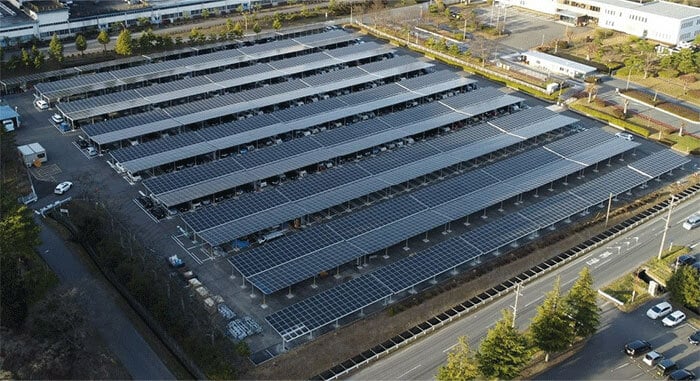
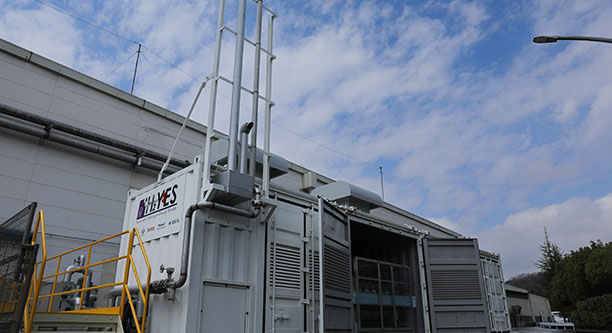

Since January 2023, we have been manufacturing tires by supplying steam produced by hydrogen-fired boilers to the curing process of our leading-edge NEO-T01 Manufacturing System, which employs a high-precision metal core and enables the production of tires boasting extremely high performance with a compact, streamlined process. Until now, hydrogen has been sourced from within Fukushima Prefecture. However, starting in April 2025, we will begin producing hydrogen in the factory using a Power-to-Gas (P2G) system that produce hydrogen using electricity derived from renewable energy sources and supplies it to the hydrogen boiler. This project is a next-generation energy system, primarily developed by Yamanashi Prefecture and other entities with funding from NEDO. It utilizes renewable energy sources such as solar power to electrolyze water and produce green hydrogen*2 with minimal environmental impact.
*2 Green hydrogen: Hydrogen produced with zero CO2 emissions using electricity sourced from renewable energy
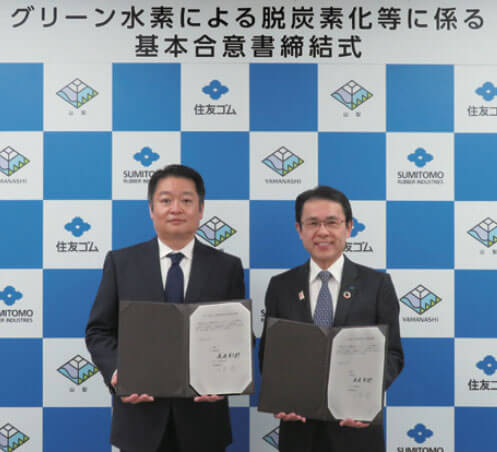
In 2022, we switched to renewable energy at two Chinese factories (Changshu and Hunan) in January, and then at another Chinese factory (Zhongshan), some domestic affiliates, and the Turkey factory. In 2023, we are planning to also switch to renewable energy at our Brazil Factory, Kobe Head Office, Tokyo Head Office (office building only), Thailand Factory, and Indonesia Factory. Furthermore, the Thailand Factory is planning to implement a cogeneration system and install the world’s largest rooftop solar power generation system.
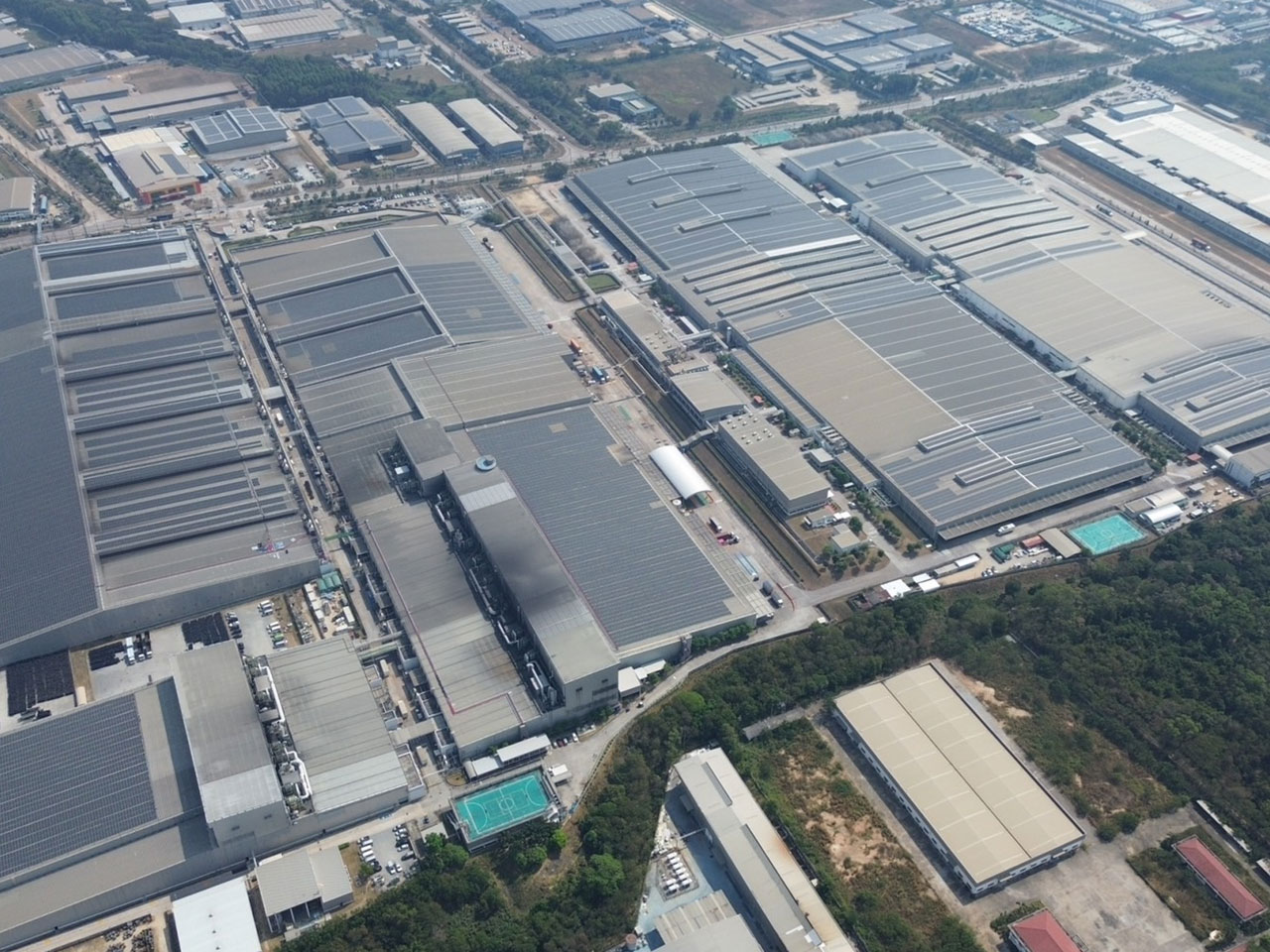
|
Item
|
The approach
|
|---|---|
|
Scope 3
|
Approximately 97% of the CO2 emissions generated by the entire supply chain of the Group are attributed to emissions from sources other than the Company (Scope 3), making reducing Scope 3 emissions a key challenge. Reducing Scope 3 emissions requires our efforts and collaboration with our suppliers, logistics operators, other companies, and industry organizations. Therefore, we will further enhance our CO2 reduction initiatives in collaboration with all relevant parties. |
Approximately 80%*3 of the Group’s Scope 3 CO2 emissions are accounted for by Category 1, “Purchased goods and services” (*3 excluding Category 11, “Use of products sold,” which corresponds to indirect emissions). Therefore, we believe that our suppliers’ cooperation is essential for reducing CO2 emissions throughout the supply chain.
In 2024, the Group held a briefing session on Scope 3 reduction initiatives for all tire raw material suppliers with the aim of reducing CO2 emissions in line with the Science Based Targets (SBT) 1.5°C pathway. At this briefing session, we explained our procurement policy, the background of the Paris Agreement, and examples of CO2 reduction measures. We also requested the provision of primary data*4 and sought understanding and cooperation. In addition, rather than merely requesting decarbonization efforts, we will advance CO2 emission reduction initiatives in collaboration with our suppliers, placing great importance on dialogue with them. To this end, we have started engaging with some of our tire raw material suppliers to assess the status of their CO2 reduction initiatives.
Moving forward, we will replace secondary data with the primary data provided by our suppliers and collaborate to implement CO2 reduction measures that align with actual conditions to achieve carbon neutrality across the entire supply chain.
*4 Primary data: Actual CO2 emissions data calculated by suppliers
We are advancing the development of sustainable raw materials in collaboration with other companies, contributing to the reduction of CO2 emissions across the entire supply chain.
Please refer to the link below for more information on climate change measures through collaboration with other companies.
In 2024, we interviewed some logistics companies and our bases regarding decarbonization measures and explored transportation methods with low CO2 emissions. We aim to reduce CO2 emissions by loading exports at ports closest to production plants and improving transportation and delivery efficiency. Our efforts to assess the current situation have led to developing a CO2 reduction policy and roadmap for 2030. In 2025, we will hold briefings for each base of operations on the company-wide reduction policy for Category 4 emissions, finalized at the end of 2024, and enhance cooperation. We will refine reduction scenarios in collaboration with each base of operations and implement specific CO2 reduction measures based on regional characteristics. In addition, we will hold briefings for some logistics operators on our CO2 reduction policy and modal shift, facilitate the sharing of primary data, and work together on future reduction measures. Our Group is committed to promoting sustainable logistics and contributing to realizing a sustainable future.
The Group is working to reduce CO2 emissions across society by promoting technical innovation and significantly reducing environmental impact throughout the entire tire life cycle.
We calculate CO2 emissions (Scope 1, 2, and 3) and set reduction targets for them as part of our environmental goals. Additionally, we quantify CO2 reductions achieved through measures such as reducing rolling resistance in tires as reduction contribution, engage in dialogue with relevant internal and external departments to assess the extent of CO2 emissions reductions during tire use, and continue to work toward realizing a sustainable future.
CO2 emissions over the life cycle of tires occur when fuel is combusted during vehicle operation. Our Group contributes to reducing CO2 emissions by decreasing tire rolling resistance in Category 11, “Use of sold products (indirect use-phase emissions),” thereby enhancing vehicle fuel efficiency. Additionally, under Category 12, “End-of-life treatment of sold products,” We are working to reduce CO2 emissions by promoting a circular economy, including extending the lives of tires, expanding the production capacity of retread tires, and promoting their use.
Furthermore, we are contributing to reducing CO2 emissions generated by our customers by developing and expanding fuel-efficient tires equipped with our SMART TYRE CONCEPT (STC). This innovative tire technology combines environmental performance with driving performance. In October 2024, we launched SYNCHRO WEATHER, a tire that offers the performance of both summer and winter tires in a single model. This contributes to reducing CO2 emissions by conserving resources in tire manufacturing and minimizing waste tire generation.
We are implementing environmental awareness-raising activities to deepen the understanding of each employee regarding environmental issues and to encourage them to actively participate in environmental conservation initiatives. In 2022, as a company-wide initiative, we set up Carbon Neutral Hub on the Sumitomo Rubber website, where we provide information on our initiatives for carbon neutrality and environmental information in video format. Furthermore, as a way of raising awareness among younger employees and getting them to think about the global environment of the future, we hold roundtable discussions on carbon neutrality for new employees.
